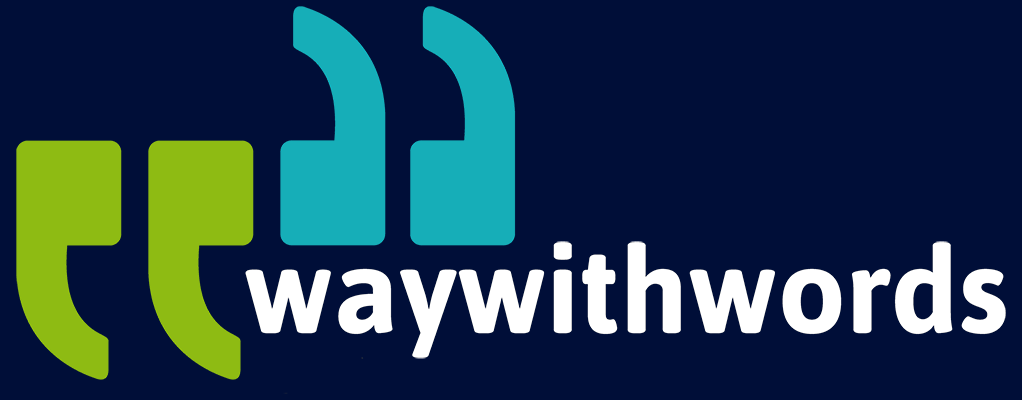How Do You Annotate Emotional Content in Speech Data?
Why Understanding Emotion Annotation in Speech Data is Vital
Machines are no longer simply expected to transcribe words — they’re now being trained to understand how we feel when we speak. The challenge? Emotion is complex, deeply human, and often difficult even for people to interpret consistently. This is where emotion annotation in speech comes in — the process of labelling segments of audio data with information about the speaker’s emotional state.
Whether you’re developing a chatbot with a compassionate tone, a mental health support tool, or a speech-based user interface, understanding affective computing and emotion annotation is vital. In this article, we explore what emotion annotation involves, the various methods used to label emotional states, the tools supporting the process, and the challenges that arise when dealing with the ambiguity of human expression.
We also look at how these insights are used in real-world applications — from improving human-computer interaction to creating more responsive and empathetic AI. Whether you’re a speech AI developer, a behavioural scientist, or part of a product team building voice emotion datasets, this guide will help you navigate the growing field of emotional speech annotation and assist you with deciding on how much speech data might be enough for your requirement.
What Is Emotion Annotation?
Emotion annotation is the process of assigning emotional labels to speech data. This process involves analysing audio files to determine not just what is being said, but how it is being said — identifying the emotional state of the speaker and tagging it accordingly.
Most emotion annotation systems use a set of predefined emotional categories. These commonly include:
- Anger
- Joy/Happiness
- Sadness
- Fear
- Disgust
- Surprise
- Neutral
Some systems also use dimensional models, such as the valence-arousal-dominance (VAD) model, which represents emotions on continuous scales:
- Valence: positive to negative
- Arousal: calm to excited
- Dominance: passive to active
For example, joy typically reflects high valence and high arousal, while sadness reflects low valence and low arousal.
The reason emotion annotation is such a crucial part of affective computing is that it enables machines to go beyond textual content and start engaging with humans on an emotional level. This becomes particularly important in applications like:
- Conversational agents
- Customer service analytics
- Call centre quality monitoring
- Clinical and mental health tools
- Behavioural research
What makes emotion annotation challenging is that human emotion is rarely clean-cut. A single utterance can reflect a mix of emotions, or change in tone throughout. This is why a growing number of datasets are annotated not only with categorical labels but also with continuous emotion ratings, temporal segmentation, and context-sensitive notes.
Emotion annotation sets the foundation for training machine learning models to detect, classify, and even respond to emotions in voice — bringing AI a step closer to understanding the subtleties of human interaction.
Methods for Labelling Emotion
There are several established techniques used to label emotional content in speech data. Each method offers different levels of precision, scalability, and complexity. The choice of method often depends on the intended application, the quality of the audio, and the availability of trained annotators.
Manual Annotation
This is the most direct and human-centric approach. In manual annotation, trained linguists or behavioural experts listen to audio recordings and assign emotional labels based on their perception. They may use annotation tools to:
- Tag the start and end times of emotional events
- Note primary and secondary emotions
- Include comments about vocal indicators (e.g. “rising pitch” or “quivering tone”)
This method allows for detailed, context-aware tagging but is:
- Time-consuming
- Resource-intensive
- Subjective
Despite these drawbacks, manual tagging is still widely used for high-value or small-scale datasets, especially in research contexts.
Prosodic Feature Analysis
Prosody refers to the rhythm, stress, and intonation of speech. Emotion often alters these features in noticeable ways:
- Anger might raise pitch and increase loudness.
- Sadness might slow speech rate and lower pitch.
- Joy might produce more varied intonation.
By analysing prosodic features, algorithms can estimate emotional states from:
- Pitch contours (fundamental frequency, or F0)
- Energy (intensity)
- Speech rate and pauses
- Voice quality (breathiness, creakiness)
These features are extracted automatically and can be fed into classifiers for emotion prediction. While this method is more scalable than manual tagging, it still requires careful model training and often benefits from hybrid approaches that combine automated predictions with human review.
Acoustic Classifiers and Deep Learning
More recently, machine learning has taken the lead in emotion detection. Classifiers — often trained on large voice emotion datasets — can learn to associate acoustic patterns with specific emotional states. Models include:
- Support Vector Machines (SVMs)
- Hidden Markov Models (HMMs)
- Convolutional Neural Networks (CNNs)
- Recurrent Neural Networks (RNNs)
- Transformer-based architectures
These models ingest acoustic features and output emotion predictions with increasing accuracy.
Key to success here is:
- A well-annotated and diverse training set
- Pre-processing and feature engineering
- Domain adaptation if applying to different languages or cultures
While fully automated annotation is becoming more accurate, it’s rarely perfect. Many applications use a semi-supervised approach, where machine-predicted labels are reviewed or corrected by human annotators.
Tools and Frameworks for Annotation
Efficient emotion annotation requires not only skilled annotators and smart algorithms, but also the right tools. Several software platforms have emerged as industry and research standards, supporting the annotation and analysis of emotional speech.
Praat
Praat is a free software tool for phonetic analysis, widely used in linguistics and speech science. Its features include:
- Spectrogram and waveform visualisation
- Pitch and intensity tracking
- Annotation tiers and time-aligned labels
- Scripting capabilities for batch processing
Praat is powerful but has a steeper learning curve. It’s ideal for detailed acoustic work and custom annotation workflows.
ELAN
ELAN is a multilingual annotation tool developed by the Max Planck Institute. It allows users to:
- Create multiple tiers of annotation
- Link audio and video with transcriptions
- Tag emotions, gestures, and contextual information
- Collaborate across teams with export/import functions
ELAN is particularly suited to interdisciplinary studies involving both speech and behaviour (e.g. in social interaction research).
openSMILE
openSMILE (Speech & Music Interpretation by Large-space Extraction) is a feature extraction toolkit that supports emotion analysis through:
- Automated acoustic feature extraction
- Real-time processing
- Compatibility with deep learning toolkits
It is widely used in emotion recognition competitions (e.g. AVEC) and supports research into affective computing by enabling fast, scalable emotion classification pipelines.
Other Tools and APIs
- Audacity – Useful for basic waveform inspection and segmentation.
- Webanno – For online collaborative annotation tasks.
- Emotion APIs – Offered by companies like Microsoft, Amazon, and Google, these services use pretrained models to classify emotional states.
Choosing the right tool often depends on:
- The granularity of the annotation required
- The need for multimodal data (e.g. facial expression and speech)
- Technical expertise available in the team
For production-grade applications, tools are often integrated into larger annotation pipelines involving automatic transcription, speaker diarisation, and quality control.

Challenges and Subjectivity in Emotion Labelling
Emotion is an inherently subjective phenomenon. Unlike phonetic transcription or syntactic annotation, there’s often no “correct” emotional label for a given utterance. This introduces several challenges:
Inter-Annotator Agreement
Different annotators may interpret the same piece of speech differently. For example:
- One may hear sarcasm, another neutrality
- Cultural norms might influence perception (e.g. how sadness is expressed)
- Personal biases or expectations may skew interpretation
Researchers measure agreement using metrics like Cohen’s kappa or Krippendorff’s alpha to assess reliability. When agreement is low, it may suggest the need to:
- Refine emotion categories
- Provide better annotator training
- Include more context (preceding speech, speaker background)
Cultural and Linguistic Variation
Emotion is expressed differently across languages and cultures. A rising pitch might signal enthusiasm in one culture, but confusion or discomfort in another. This makes cross-cultural emotion annotation a challenging but essential field of study — especially when building global AI applications.
It also explains why many companies building voice emotion datasets seek to include diverse speakers from various regions, dialects, and socio-cultural contexts.
Speaker Variability
Some people express emotion more vividly than others. Individual differences in pitch range, speaking rate, or articulation can affect how emotions are perceived. Additionally, age, gender, and health can all influence vocal expression.
For emotion annotation systems to be robust, they must account for:
- Speaker adaptation during model training
- Speaker normalisation during feature extraction
- Inclusive datasets that reflect real-world diversity
Ambiguity and Blended Emotions
Human emotion is rarely singular. People often experience and express blended emotions — such as bittersweet joy or anxious excitement. These are difficult to annotate with simple categorical labels.
To address this, some systems use:
- Multi-label tagging (e.g. both joy and surprise)
- Confidence scores (likelihood of each emotion)
- Temporal annotation (emotion changes over time)
Ultimately, the goal isn’t to perfect the annotation process, but to make it consistent, explainable, and useful for training machines to detect emotion with nuance and sensitivity.
Application in AI and Human-Computer Interaction
Emotion-labelled speech data plays a critical role in shaping the future of affective computing — enabling machines to not only understand what we say, but how we feel when we say it.
Conversational AI and Chatbots
Integrating emotional awareness into virtual assistants and chatbots allows for more natural and empathetic interactions. For example:
- A customer support bot that detects frustration can escalate the issue faster.
- A wellness app can adapt responses to comfort someone sounding distressed.
- A learning assistant can adjust its tone if the user sounds confused or demotivated.
This requires real-time emotion annotation speech models trained on diverse and well-annotated data.
Accessibility and Assistive Tech
Emotion-aware systems can greatly enhance support for people with communication difficulties, including:
- Individuals on the autism spectrum
- People with cognitive impairments
- Non-native language users
By interpreting subtle emotional cues, these systems can bridge communication gaps and personalise user experiences.
Personalised Media and Content Delivery
Streaming services and entertainment platforms are exploring ways to use emotion detection to:
- Recommend content based on mood
- Tailor music playlists in real time
- Gauge audience reactions to ads and shows
This drives demand for voice emotion datasets rich in context, speaker diversity, and annotated emotional dynamics.
Clinical and Mental Health Monitoring
Emotion annotation is increasingly used in:
- Depression and anxiety detection tools
- Suicide risk assessment platforms
- Telehealth voice assessments
Emotion-aware AI can flag potential concerns early, offer interventions, or support human clinicians in diagnosis and monitoring.
Human-Robot Interaction
In social robotics, emotion recognition allows robots to:
- Respond empathetically
- Mirror human emotions
- Maintain appropriate social dynamics
Whether in elderly care or education, robots with affective capabilities are proving more engaging and trustworthy.
Speech Data Resources
Emotion annotation in speech is not just about labelling — it’s about giving machines a deeper understanding of humanity. As AI systems continue to evolve, the need for reliable, nuanced, and culturally aware emotion-labelled speech will only grow. For anyone working in emotion AI, affective computing, or human-computer interaction, this work is essential in making machines not just intelligent — but emotionally intelligent.
- Affective Computing – Wikipedia
- Featured Transcription Solution: Way With Words: Speech Collection – Way With Words excels in real-time speech data processing, leveraging advanced technologies for emotion-rich datasets. Their tailored solutions support AI developers, researchers, and enterprises needing accurately annotated emotional speech data for mission-critical applications.
